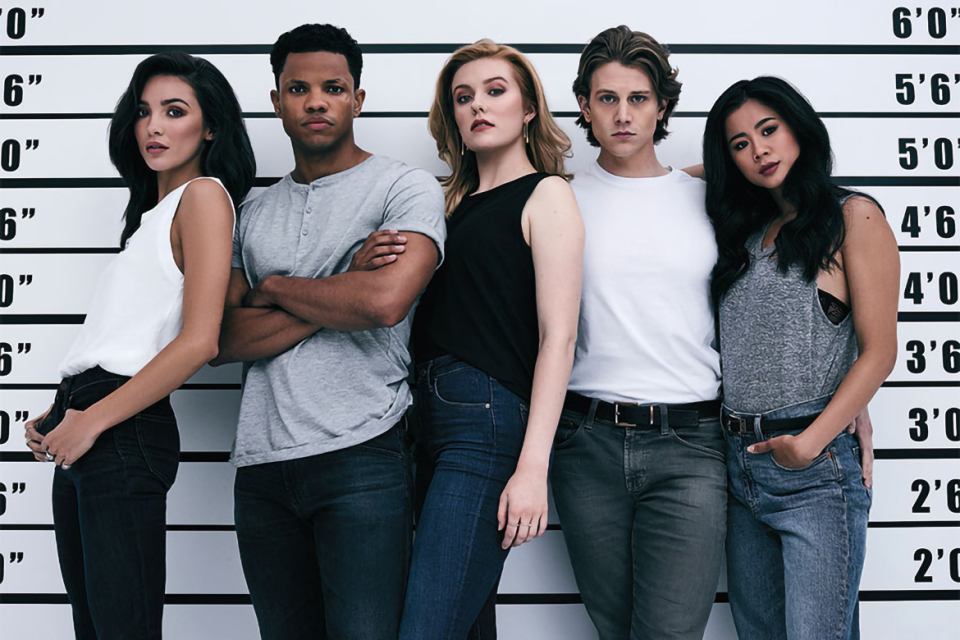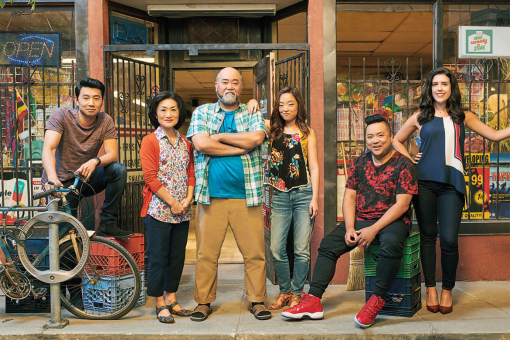Of all the adaptations of the iconic "titian-haired girl detective" mysteries — three TV series, five films and dozens of videogames — the CW's is the most ethnically diverse Nancy Drew yet.
If producers were holding their breath about how audiences would react to a historically homogenous franchise featuring faces of color, they can exhale. Initial focus groups were aghast that Nancy (Kennedy McMann) was knocking boots with longtime boyfriend Nick Nickerson — not because he was black, but because the traditionally chaste teen was actually having sex.
"People had no problem slut-shaming Nancy, but not one said it was not okay for her to date a black guy," showrunner Melinda Hsu Taylor says. Writer Noga Landau (who developed the show and executive-produces with cocreators Josh Schwartz and Stephanie Savage) adds, "If [negativity] is out there, it's well shielded by the people who like what they see."
A diverse cast, crew and writers' room were top priorities for Taylor and Landau. "The world is multi-ethnic; America is multi-ethnic," says Landau, who notes that most of the writers and producers are also women. "We wanted it to feel real, and we wanted a diversity of experiences to draw upon. Everybody's background eventually plays into their stories."
"Everybody" means characters such as George, played by Chinese-American Leah Lewis; Bess, played by Maddison Jaizani, who is Iranian and British; Nick, played by Tunji Kasim, who is Nigerian and Scottish; Detective Hart, played by Alvina August, who is African American; and Chief McGinnis, played by Adam Beach, a First Nations Canadian.
Each has had, or will have, an episode that references his or her cultural heritage — and sometimes the injustices that come along with it.
"We have a scene at a fancy party, and somebody casually asks Nick to refill their drink," Taylor says. "He just walks away, doesn't engage with the person. It doesn't turn into a thing." A number of the writers have had some version of that experience, including Taylor herself, who is Chinese-American.
"I've always been very sensitive to inclusivity. That's one of the reasons I'm a writer. I was very isolated growing up in Maine, and I turned to science-fiction and fantasy novels as an escape from not looking like everybody else. I loved stories where if you're different, it's wonderful; it's the thing you bring to the party."
In the original books (the first of the series was published in 1930), minorities were not only not valued for what they brought to the party, they were described in racist terms.
From 1959 and into the '70s, the publisher had the original creator's daughter rewrite the books to modernize them, but rather than updating the non-white characters, she largely removed them. She also made Nancy more demure.
With the freshman show already picked up for season two, Landau and Taylor attribute its success to at least two factors: their faithfulness to the original Nancy Drew — an intrepid teen who solves mysteries with a supportive group of people around her — and the diversity that would never have appeared in the books a few decades ago.
Says a gleeful Landau, "This is a show made by a Chinese woman and a Jewish woman. Who has the last laugh now?"
Catch up on Nancy Drew on CWTV.com or the CW app.
This article originally appeared in emmy magazine, Issue No. 2, 2020







